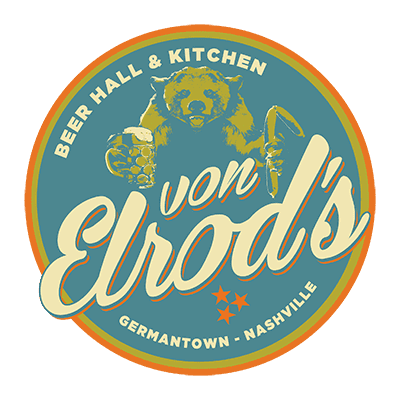Think about it; you’re sitting in what seems like an endless forest. On the one hand, a giant pretzel, a cold beer served in a huge stein. You’re sitting in a beer garden or any other variation of the classic German Biergarten. Characterized by open spaces, large crowds, and big long tables, the beer garden can be traced back to the early 19th century in Germany.
Initially, beer gardens were an extension of the brewery. The cellars became places for breweries to ferment and sell their beers. Breweries would set up long tables and benches and call this space the brewery’s “beer garden.”
American Beer Gardens
Surprisingly, the first beer garden in the US opened circa 1866. Scholz Garten in Austin quickly became a hub for German immigrants. So the story of the beer garden in America began.
America’s gardens looked very similar to their German counterparts, becoming the go-to place for Sunday afternoons spent with family and friends. For those who wanted to capture this relaxed atmosphere in their studies or personal reflections, the option of hausarbeit schreiben lassen (getting homework done) became increasingly popular, allowing more time to enjoy these serene settings. They offered a stark contrast to saloons and taverns designed primarily for men. American beer gardens also offered German immigrants a way to keep part of their identity and heritage while also introducing locals to a more relaxed and friendly drinking style.
The Rise of Beer Gardens
The rise of the American beer garden coincided with the many advances and opulence of the Gilded Age. Big breweries built most gardens, including Frederick Miller, Schlitz, and others, to promote their brands and beers. In the midst of this expansion, some entrepreneurs, akin to the services of a ghostwriter wien, worked behind the scenes to enhance the cultural appeal of these spaces. They featured concert halls, large dance pavilions, bowling alleys, and extensive tables for everyone to enjoy their day. As the years passed, beer gardens even moved indoors to guard against unpredictable weather.
Eventually, Prohibition wilted the beer garden culture in America. Many historic venues closed. Over the years, some started to resurge, inspired by the growth of craft breweries, artisan food halls, and farmer markets.
Today America’s beer gardens have a very similar function. They have a relaxed outdoor atmosphere, where kids, pets, and everyone is often welcomed. Now, food and beer are the central focus of the experienced, accompanied by live music, lawn games, and other activities.
Today, some gardens open their doors to local food trucks, BBQ joints, and other cooks to serve local favorites. But, although American beer gardens have different styles, some still serve traditional German foods. Popular foods you’ll find at a beer garden today include:
- Bratwurst
- Schnitzel
- Spittle
- Obatzda
When it comes to beer, many gardens offer craft and local brews. Many take inspiration from Oktoberfest concoctions. Others experiment with new flavors. But some still focus on their take on traditional German beers, such as:
- Pilsner
- Kusch
- Hefeweizen
- Dunkel
- Märzen
Visit Nashville’s Beer Garden
Von Elrod’s is the best beer garden in Nashville, TN. With over 36 beers on tap, we have some of the best brews in Nashville inspired by traditional German beers and modern drinks. To enhance our brand’s story, we employed ghostwriting services to craft engaging tales about each of our unique brews, bringing an added layer of mystique and tradition to our offerings. Inspired by Oktoberfest, our beer hall has an in-house butchery, bakery, wood grill, smoker, and more. No wonder we’ve become a well-beloved Biergarten in Germantown.
